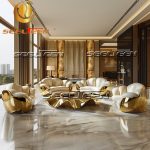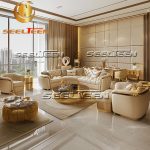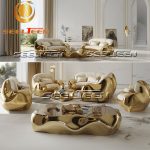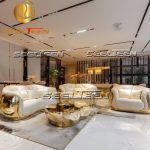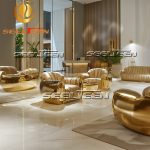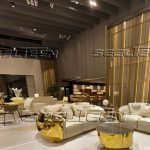Knowledge of hotel project
Knowledge of hotel project
How to choose hotel furniture design and the right materials for your project
Choosing the most suitable furniture for a hotel is a daunting task. You need to know how to arrange the space, choose the right style, know how to control the cost and delivery deadline.
SeelTeen specializes in manufacturing hotel furniture for more than 15 years. Because of the problems faced by non-professional hotel owners or managers in selecting suppliers, comparing quality and prices, we have specially compiled this information and hope to help you avoid losses!
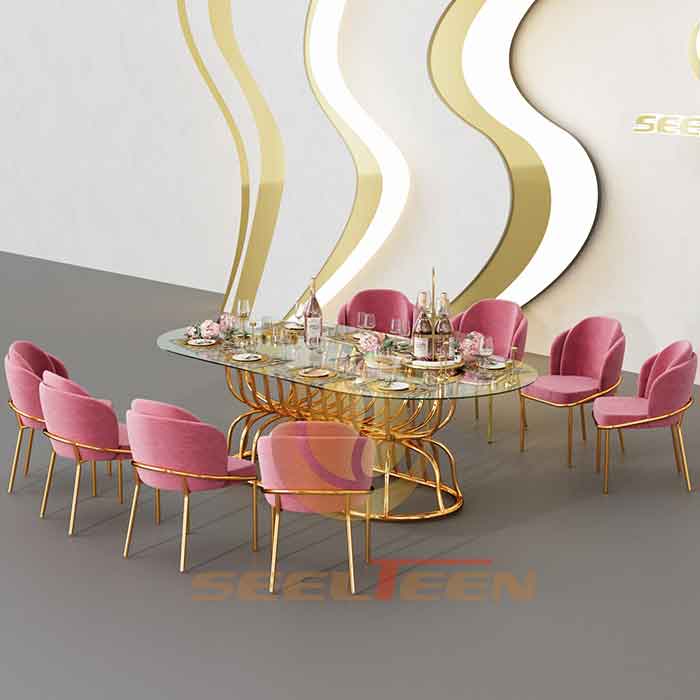
1. Common wood introduction:
-
Rubberwood
Rubberwood has a dense grain that is easily controlled in the kiln drying process. Rubberwood has minimal shrinkage making it one of the more stable construction materials available for furniture, toys, and kitchen accessories. It is easily worked and takes on stains uniformly. It is not suitable for outdoor use, as rain can leach the protective chemicals from the wood, exposing it to fungus and insect attacks. Excessive moisture will also cause the wood to warp and rot.
-
Ashwood
Ash is a favorite with furniture and architectural millwork manufacturers. A light-colored species with open grain and a coarse texture similar to oak, Ash is relatively dense with excellent working and finishing properties. The wood of Ash is economically important due to its strength, hardness, weight, and shock resistance.
-
Oakwood
Oak is a hard, dense wood, and has low stiffness and good overall strength, making it increasingly popular as structural timber. It also has perfect steam bending properties. White oak machines well and is easy to glue, nail, and screw. It readily accepts stains and polishes to a good finish. The heartwood is susceptible to lyctid borer attack and to termites.
-
Beechwood
Beechwood has a medium resistance to shocks, reddish-brown wood, the grain is tight, and the large rays and fine lines resemble those found in maple wood and birch wood. It is easy to stain, which makes it perfect for many types of furniture. But it is susceptible to bugs, so a protective treatment is recommended.
-
Walnut wood
Walnut is a very popular premium hardwood, with its brown color and shock resistance, Black Walnut is a sturdy hardwood that provides an excellent choice for any woodworking.
Its heartwood can either be a light brown color or a dark chocolate brown, containing dark streaks. The sapwood is pale yellow, and the grain is usually straight. Black Walnut has a medium texture, and it’s incredibly durable to decay, although it can be affected by insects.
-
Teakwood
Teak is a tropical hardwood tree species. Teak wood is very water-resistant, durable, and resistant to pests, diseases, and rot. Therefore, it is vital for building things like outdoor furniture and boats, which would be exposed to the elements. Because of these great qualities, teak wood is also costly. By looking closely at color, grain, scent, and weight, you can make sure the teak you’re getting is real and authentic.
Now you know the difference between each wood. But the same wood has several grades, different grades with different prices. The moisture content of the wood is significant for quality. SeelTeen hotel furniture manufacturing has been controlling the moisture content of the forest according to the climate of hotel locations, to prevent furniture deformation and cracking.
2. Basic material introduction:
Plywood and MDF are engineered wood products.
Plywood is made by pressing and binding sheets of wood veneer together into one solid piece.
Medium-density fibreboard (MDF) is an engineered wood product made by breaking down hardwood or softwood residuals into wood fibers, often in a vibrator, combining it with wax and a resin binder, and forming panels by applying high temperature and pressure。
-
Advantages of MDF
MDF is generally cheaper than plywood.
The surface of MDF is very smooth
MDF is an excellent substrate for veneer.
Cut edges appear smooth and won’t have voids or splinters.
-
Disadvantages of MDF
MDF will soak up water and other liquids like a sponge and swell unless it’s very well sealed on all sides and edges with primer, paint, or another sealing product.
Because it consists of such fine particles, MDF doesn’t hold screws very well, and it’s effortless to strip the screw holes.
MDF is very heavy.
-
Advantages of Plywood
Plywood bind resin and wood fiber sheets to form a composite material.
It has several significant benefits: it reduces the tendency of wood to split when nailed in at the edges; it reduces expansion and shrinkage, providing improved dimensional stability; and it makes the strength of the panel consistent across all directions. There is usually an odd number of plies so that the sheet is balanced—this reduces warping. Because plywood is bonded with grains running against one another and with a different number of composite parts, it has high stiffness perpendicular to the grain direction of the surface ply.
-
Disadvantages of plywood
It’s more expensive than MDF. And obviously, the higher the grade, and the more unique the species of wood, the more expensive it gets.
Because of the layers that show on the edge, you have to finish off the edges somehow. This can be done with iron-on edge banding or with pieces of lumber or decorative molding.
Plywood will often splinter on the edges when cut, so it’s harder to get a smooth cut with plywood than it is with MDF.
Based on budget, whether you choose Plywood or MDF, the most important is the grade of the board. SeelTeen has been building contract-grade furniture for over 14 years and only uses quality materials, through a combination of traditional woodworking methods and computer-controlled machinery, our factory maintains a consistent and efficient workflow.
3. Surface material introduction ( veneer and laminate):
A wood veneer is a skinny slice of wood that is obtained by peeling a tree log.
Laminate is an artificial material made from decorative papers and plastic resins.
-
Veneer
The price of veneer sheets is always calculated per square meter.
Its price may vary depending on the type of wood species, kind of cut, and thickness of the sheet.
The surface can be customized by polishing or painting. It requires special skills, instruments, and adhesives. Before final polish, veneer has to be smooth using sand-paper.) Thus it needs more time for the production process.
As the veneer is a natural material, once it’s damaged a similar replacement is never available.
Veneers have less resistant to abrasion and scratches as compared to laminates.
It is a natural wood product, the surface has to be re-polished periodically. Special care has to be taken while cleaning the surface to prevent damage.
If timely polishing and proper care are taken the material is known to last longer than laminates. Cut edges appear smooth and won’t have voids or splinters.
-
Laminate
It is more economical than veneer.
It is effortless to maintain as the surface is resistant to physical damage. Wiping with a damp cloth or vacuuming is all it takes to clean the surface.
The surface of the laminate is hard and resistant to abrasion and scratching, it can resist water up to a certain extent.
It is a brittle material, it is not resistant to warping and fragmentation.
Once damaged, laminates cannot be recycled.
Standard Length and Width:
8 feet x 4 feet (2438 mm x 1219 mm)
Easy to produce as no special skills and instruments are required.
It can be covered with plywood / MDF or chipboard, no polishing is needed.
If you need good aesthetics and have a luxurious budget, a veneer is recommended. However, laminates go hand in hand as far as general use is concerned.
4. Qualified structure of hotel furniture:
How to know the furniture is durable? The most intuitive judgment is to check the structure. The ultimate goal of furniture structural design is to analyze the bearing characteristics and mechanical principles of furniture products and to rationally construct a furniture support system to ensure the robustness and durability of the furniture during use.
-
Solid wood (The Mortise-And-Tenon joint)
The Mortise-And-Tenon joint is an extremely ancient structural technique that has stood the test of time and is still in use today. The bone has two primary components: “skull” and “blinking.” The connection of these two components is usually permanently connected by gluing, pinning or wedging. Blinking can be opened at one end or completely hidden. The tenon is generally longer than its width.
-
Wooden furniture
Panel furniture is disassembled modular furniture. The wood-based panels used include plywood, blockboard, particleboard, and MDF. The combination is usually connected by various metal hardware.
Because the substrate breaks the original physical structure of the wood when the temperature and humidity change much, it is not easy to deform, and the quality is stable.
5. Price and quality
The hotel has a star rating, and the furniture is the same. The quality standards of each factory are different, and the price system is different. For example, it looks like the same appearance sofa, some people have a profit of $200, but some people have a material cost of more than $300.
The picture below shows the interior details of the sofa made by SeelTeen, which is very durable.
Welcome to contact us to get the latest price list!
Do you need to read another article? Please click on this: The hotel room that any guest will appreciate
Find us on Facebook, Instagram and don’t miss a single breath


